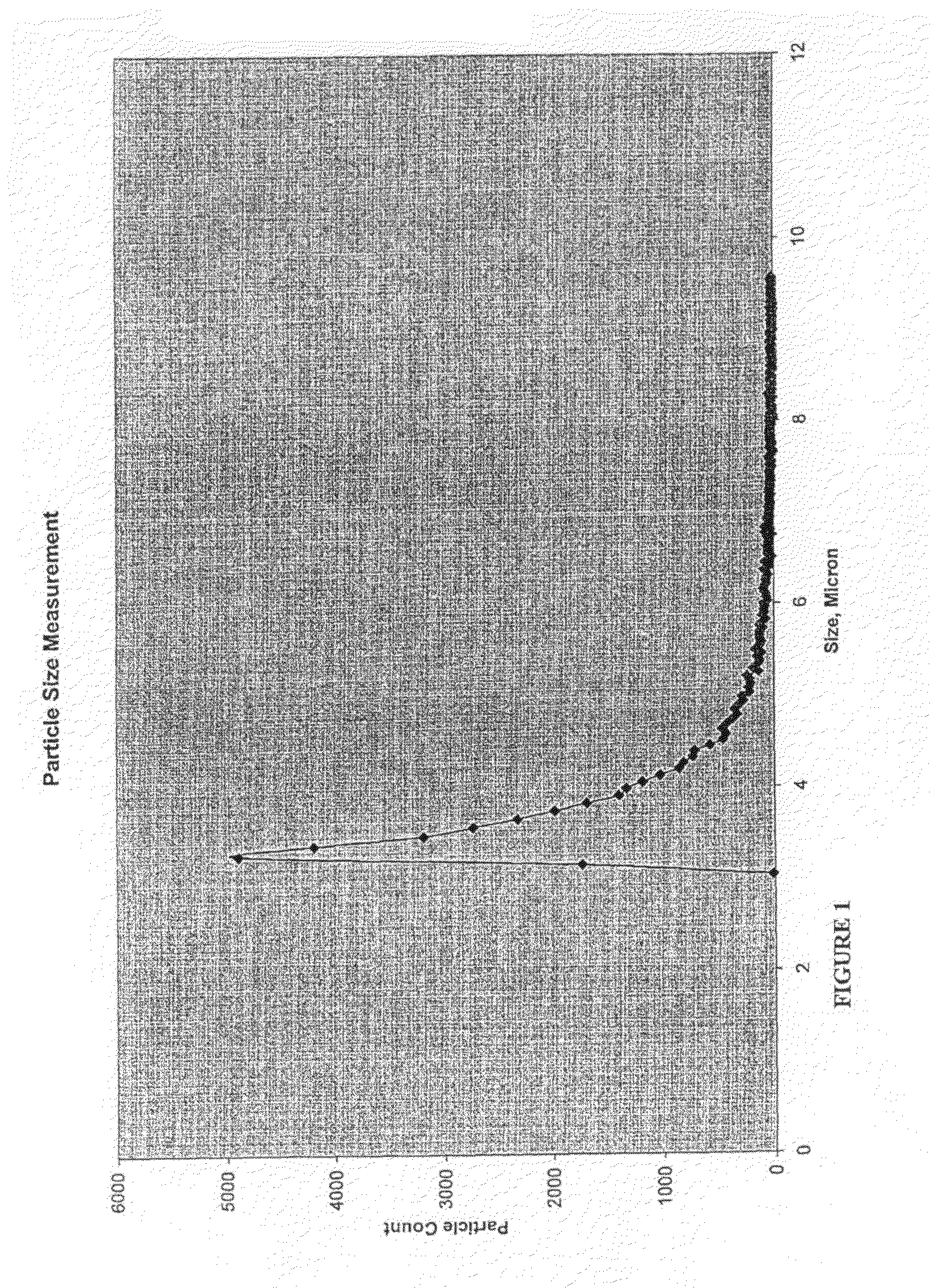Production of Toner for Use in Printing Applications
a technology for printing applications and toner, applied in the field of color toner production, can solve the problems of reduced toner, uneven density or color of an image being formed, and extremely deteriorated powder flowability
- Summary
- Abstract
- Description
- Claims
- Application Information
AI Technical Summary
Benefits of technology
Problems solved by technology
Method used
Image
Examples
example 1
With Crystal Growth Inhibitor
[0086]425 g of Diacron ER-502 polyester (supplied by Dianal America, Pasadena, Tex.) with a softening temperature of 110° C. and a small amount of gel content, 30 g of pigment blue 15:3, 25 g of bisphenol-A type epoxy resin, and 20 g of Montan wax were mixed in a two-roll mill, and pulverized into 20 mesh coarse powders. The material is designated as Coarse Polymer Powder.
[0087]1280 g of de-ionized water was introduced into a 1 gallon vessel fitted with a Kady Lab Mill and stirred at a motor speed of 15 Hz. 17.2 g of trisodium phosphate decahydrate, 2 g of citric acid, and 1 g of sodium pyrophosphate were then added to the vessel. The temperature of the vessel was increased to 98° C. 133 g of 3.5% aqueous solution of calcium chloride was then titrated into the vessel. 10 minutes after completion of the calcium chloride addition, a sample was taken from the vessel and pH of the sample was measured to be 7.8. The motor speed of Kady Mill was then increased...
example 2
[0089]The same process of Example 1 was followed, except that only 1 g of citric acid was added instead of 2 g. pH of a sample retreated 10 minutes after completion of the calcium chloride addition was measured to be 10.5. Pv was 6.9 μm, and Pv / Pn was 1.30.
example 3
[0090]450 g Diacron ER-535 polyester (supplied by Dianal America, Pasadena, Tex.) with a softening temperature of 99° C. with no gel content, 30 g of pigment blue 15:3, 25 g, and 20 g of Montan wax were mixed in a two-roll mill, and pulverized into a 20 mesh coarse powder. The material is designated as Coarse Polymer Powder.
[0091]In a 1 gallon vessel fitted with a Kady Lab Mill, 1500 g of de-ionized water was introduced and stirred at a motor speed of 15 Hz. 14.3 g of trisodium phosphate decahydrate and 2 g of phthalic anhydride was then added to the vessel. The temperature of the vessel was increased to 60° C. and 110 g of a 3.5% aqueous solution of calcium chloride was titrated into the vessel. Afterward, the temperature of the vessel was increased to 98° C. and was held at 98° C. for 15 minutes. The motor speed of the Kady Mill was then increased to 45 Hz and 150 g of the Coarse Polymer Powder was introduced into the vessel. 30 minutes after introduction of the Coarse Polymer Pow...
PUM
 Login to View More
Login to View More Abstract
Description
Claims
Application Information
 Login to View More
Login to View More - R&D
- Intellectual Property
- Life Sciences
- Materials
- Tech Scout
- Unparalleled Data Quality
- Higher Quality Content
- 60% Fewer Hallucinations
Browse by: Latest US Patents, China's latest patents, Technical Efficacy Thesaurus, Application Domain, Technology Topic, Popular Technical Reports.
© 2025 PatSnap. All rights reserved.Legal|Privacy policy|Modern Slavery Act Transparency Statement|Sitemap|About US| Contact US: help@patsnap.com

